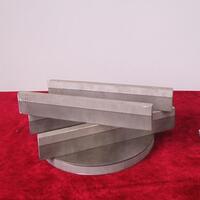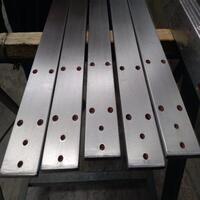1. Introduction
Metal clad exteriors have become a popular choice for both residential and commercial construction due to their durability, modern aesthetic, and low maintenance requirements. From a sleek steel facade to rustic corten steel siding or a reflective zinc clad roof, metal cladding offers versatility in design while providing excellent weather resistance. However, proper installation and upkeep are critical to maximizing the lifespan and visual appeal of these systems. This guide walks you through the essential steps for installing and maintaining metal clad components such as metal clad walls, roofs, and facades.

2. Understanding Metal Clad Systems
Before installation, it’s important to understand what ‘metal clad‘ means. The term refers to building surfaces covered with sheets or panels made from metals like steel, aluminum, copper, or zinc. These may be solid plates—such as stainless steel plate or corten steel plate—or composite forms like aluminum clad steel or stainless clad aluminum. Common applications include metal clad siding, standing seam facade systems, corrugated steel facade panels, and even metal clad sheds or column covers like PAC CLAD coping and column systems.
3. Selecting the Right Metal Clad Material

Choosing the appropriate material depends on climate, budget, and design goals. For instance:
- Corten steel siding offers a weathered look and is ideal for artistic or industrial designs, though corten siding cost can be higher than standard options.
- Zinc metal siding and zinc clad dormers provide longevity with natural patina development.
- Aluminum clad sheet or aluminum diamond tread plate is lightweight and corrosion-resistant, suitable for coastal environments.
- For roofing, options like Colorbond standing seam or PAC CLAD HWP standing seam offer clean lines and excellent water shedding.
Always verify compatibility with local building codes, especially when using metal clad electrical wire or aluminum clad pipe insulation in commercial settings.

4. Preparing the Substrate
Proper substrate preparation ensures long-term performance. Begin by installing a moisture barrier over sheathing. Use furring strips if needed to create an air gap behind vertical standing seam metal siding or exterior corrugated metal siding. Ensure the surface is level, structurally sound, and free of protrusions that could damage the metal during installation.
5. Installing Metal Clad Wall Panels
Follow these steps for a professional-grade metal clad wall:
- Measure and cut panels using metal sheet cutting tools rated for your specific alloy (e.g., 6061 T6 aluminum plate or 316 stainless steel plate).
- Start at the bottom corner and work upward, overlapping panels according to manufacturer specifications.
- Secure panels with corrosion-resistant fasteners compatible with the base metal—stainless steel screws for stainless plate, aluminum rivets for aluminum clad steel.
- For standing seam systems, use hidden clips to maintain a seamless appearance and allow thermal expansion.
- Seal joints and penetrations with compatible sealants to prevent water intrusion.
6. Installing a Metal Clad Roof
Metal clad roofs—such as zinc clad roof or PAC CLAD standing seam—require precision:
- Begin at the eaves and install starter strips.
- Align panels carefully; misalignment can compromise drainage and aesthetics.
- Use specialized tools to seam panels together for standing seam types.
- Install flashings and edge details like PAC CLAD coping to protect vulnerable areas.
- Ensure adequate roof ventilation to prevent condensation buildup underneath the metal layer.
7. Common Installation Mistakes to Avoid
- Skipping thermal breaks in hot climates, leading to heat transfer.
- Using incompatible fasteners that cause galvanic corrosion (e.g., steel screws on aluminum sheets).
- Over-tightening fasteners, which can deform thin-gauge metal or restrict movement.
- Ignoring expansion gaps, especially with long runs of metal weatherboard or steel plate installations.
8. Maintenance and Longevity Tips
Even the most robust metal clad house benefits from routine care:
- Rinse surfaces annually with fresh water to remove salt, dust, or pollutants—especially important for coastal installations using aluminum clad stainless steel or copper siding.
- Inspect seals and fasteners every 2–3 years; replace any corroded hardware.
- For corten steel facade systems, avoid sealing the surface; the protective rust layer needs airflow to form properly.
- Clean stains on stainless metal sheet or brass plate with mild detergent and soft cloths—never abrasive pads.
9. Conclusion
Installing and maintaining a metal clad building system—whether it’s a steel clad house, a zinc facade, or a corrugated steel facade—requires attention to material selection, precise execution, and ongoing care. By following these practical steps, builders and homeowners can ensure their metal clad exteriors remain functional, attractive, and resilient for decades. Whether you’re working with clad metals like titanium clad panels or standard aluminum clad wire conduits, understanding the metal clad meaning and best practices is key to success.
Our Website founded on October 17, 2012, is a high-tech enterprise committed to the research and development, production, processing, sales and technical services of ceramic relative materials such as How. Our products includes but not limited to Boron Carbide Ceramic Products, Boron Nitride Ceramic Products, Silicon Carbide Ceramic Products, Silicon Nitride Ceramic Products, Zirconium Dioxide Ceramic Products, etc. If you are interested, please feel free to contact us.
